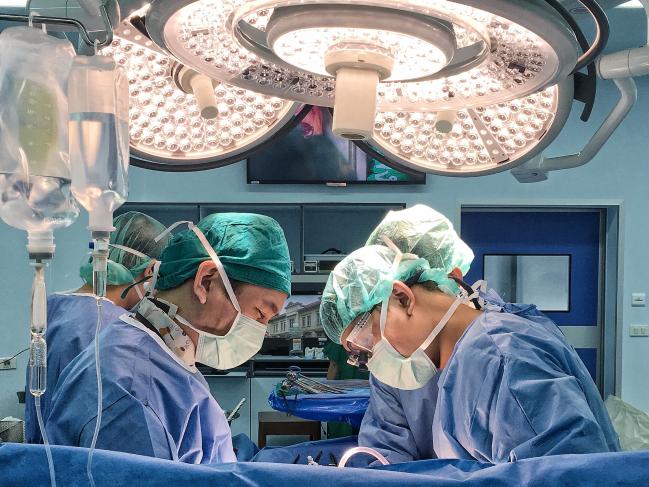Surgical Aortic Valve Repair Effective, Durable in Experienced Hands
Over a decade-long period at the Cleveland Clinic, more than 1,000 patients underwent the procedure, with “excellent” long-term results.

Surgical aortic valve repair can effectively reduce aortic regurgitation (AR), with only one in 10 patients needing reoperation for valve dysfunction within a decade after treatment, according to a report out of the Cleveland Clinic.
But having the right skillset is key, Ahmad Zeeshan, MD (Cleveland Clinic, OH), and colleagues stress in their paper published online this week in the Annals of Thoracic Surgery. Two specific techniques—commissural figure-of-8 suspension sutures and repair with annular support—were found to offer the best long-term durability.
Aortic valve repair is an appealing yet uncommon procedure, senior author Lars G. Svensson, MD, PhD (Cleveland Clinic), told TCTMD. “Unfortunately, if you look around the country there are very few centers that have the volume or the expertise to do aortic valve repairs,” he observed. "It does require a steady number of cases to be done all the time, to both learn the skills and to keep up the skills."
While repairs don’t hold up for patients with aortic valve stenosis, those treated for leaking valves have results that are “excellent long term if one has the right procedures and skills to do them,” Svensson said.
“For the bicuspid valves, I tell patients 70% of the time we can repair those valves for them, and if they’ve got a three-leaflet valve with enlarged aortic root, I tell them in the region of 90% to 95% of the time we can repair the valves and keep them,” Svensson said.
Patients younger than 65 years have the most to gain from repair, given that most would otherwise receive a mechanical valve and need to be on warfarin, he suggested. Earlier research has shown “that only 40% of patients who have mechanical valves are alive without having any events at 10 years after their replacement,” Svensson said. “So there’s a fairly significant event rate related to thrombosis, bleeding, stroke, and obviously also death with mechanical valves.”
Surgical replacement with a bioprosthetic valve also is problematic for younger patients, he added, because these devices tend to fail over the long term and thus would set the stage for repeat surgeries.
It does require a steady number of cases to be done all the time, to both learn the skills and to keep up the skills. Lars G. Svensson
The investigators tracked the outcomes of 1,124 patients who underwent planned, elective, primary aortic valve repair at their center between January 2001 and January 2011. Various techniques were employed, including commissural figure-of-8 suspension sutures (6.2%), commissuroplasty (48%), commissurotomy (2.1%), debridement (17%), cusp resection (7.4%), cusp suturing (9.1%), cusp patching (1.2%), free-margin plication (27%), root reimplantation (25%), root remodeling (3.5%), suture annuloplasty (0.20%), and resuspension (23%).
Ten percent of patients had their planned repair aborted and underwent replacement instead, with both greater AR severity and valve calcification significantly predicting this risk.
Among the 1,009 patients who underwent repair, 1.2% died, 1.3% had a stroke, and 1.4% needed reoperation for valve dysfunction during their hospital stay. Postoperative complications also included renal function require dialysis (1.2%) and reoperation for bleeding (3.4%). Median intensive care unit stay was 27 hours, with an average postoperative stay of 6 days.
Immediate postoperative AR grade was none-mild for 94%, moderate for 5%, and severe for 1%. Ten years later, AR grade was none in 20%, mild in 33%, moderate in 26%, and severe in 21%.
Freedom from reoperation and survival rates were high up to 10 years after repair.
Long-term Outcomes of Aortic Valve Repair
|
|
1 Year |
5 Years |
10 Years |
|
Freedom From Reoperation |
97% |
93% |
90% |
|
Survival |
96% |
92% |
83% |
In the early hazard phase, reoperation risk was higher for patients with larger LV end-diastolic volume index and commissural suturing. Later on, the risk was elevated among younger patients and those who had commissuroplasty.
“Cusp repair performed along with a root procedure was more durable than when performed alone,” Zeeshan et al report. Patients treated with commissural figure-of-8 suspension sutures also were less likely to require reoperation over time. This stitch, which Svensson developed, “increases the area of apposition for the valve leaflets and puts them up at a higher level, with a bit more tension. So you’ve got a better contact area and apposition, and probably also some built-in redundancy in case the leaflets stretch over time,” he said.
Svensson said all of the repair procedures are done as “minimally invasive keyhole operations,” though there is hope that one day transcatheter repair will be possible via the transfemoral approach.
Overall, the investigators conclude, “aortic valve repair is a safe, effective, and durable operation for AR within the constraints shown in this study.” They add that at experienced centers, the survival rates and durability of repair match what’s seen with bioprosthetic valve replacement.
Caitlin E. Cox is News Editor of TCTMD and Associate Director, Editorial Content at the Cardiovascular Research Foundation. She produces the…
Read Full BioSources
Zeeshan A, Idrees JJ, Johnston DR, et al. Durability of aortic valve cusp repair with and without annular support. Ann Thorac Surg. 2017;Epub ahead of print.
Disclosures
- This study was partly funded by the Gus P. Karos Registry Fund, the Reiman Foundation, the David Whitmire Hearst, Jr Foundation, the Anderson Family Foundation, the Judith Dion Pyle Endowed Chair in Heart Valve Research, the John and Rosemary Brown Endowed Chair in Cardiovascular Medicine, the Peter and Elizabeth C. Tower and Family Endowed Chair in Cardiothoracic Research, and the Drs Sidney and Becca Fleischer Heart and Vascular Education Chair.
- Svensson reports being an unpaid member of the executive committee for PARTNER trials I and II, chairman of the PARTNER Publication Committee, and an unpaid member of the executive committee of the COMMENCE trial, sponsored by Edwards Lifesciences.


Comments